
Lieutenant-General Bernard Cyril Freyberg, 1st Baron Freyberg, was a British-born New Zealand soldier and Victoria Cross recipient, who served as the 7th Governor-General of New Zealand from 1946 to 1952.

Lieutenant-Colonel John Stanhope Collings-Wells VC DSO was an English recipient of the Victoria Cross, the highest and most prestigious award for gallantry in the face of the enemy that can be awarded to British and Commonwealth forces. He was educated at Uppingham School and Christ Church, Oxford, where he joined the Apollo University Lodge.

Brigadier Manley Angell James, was a British Army officer and an English recipient of the Victoria Cross, the highest award for gallantry in the face of the enemy that can be awarded to British and Commonwealth forces.
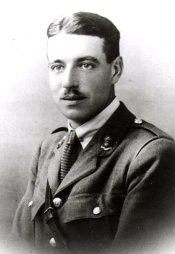
Major Cecil Leonard Knox VC was an English recipient of the Victoria Cross, the highest and most prestigious award for gallantry in the face of the enemy that can be awarded to British and Commonwealth forces.
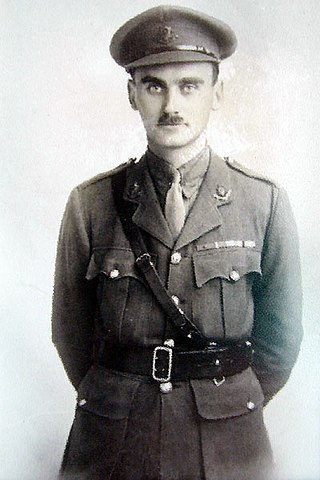
Major-General Frank Crowther Roberts, was a British Army officer and an English recipient of the Victoria Cross (VC), the highest award for gallantry in the face of the enemy that can be awarded to British and Commonwealth forces.
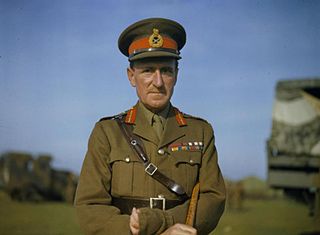
General Sir Bernard Charles Tolver Paget, was a senior British Army officer who served with distinction in the First World War, and then later during the Second World War. During the latter, he commanded the 21st Army Group from June to December 1943 and was Commander-in-Chief (C-in-C) Middle East Command from January 1944 to October 1946. He was the senior serving general in the British Army and, in Richard Mead's words, "he was possibly the most talented and well-qualified senior British general never to have held a top active service field command, but his contribution to the development of the Army during the War was nevertheless immense."
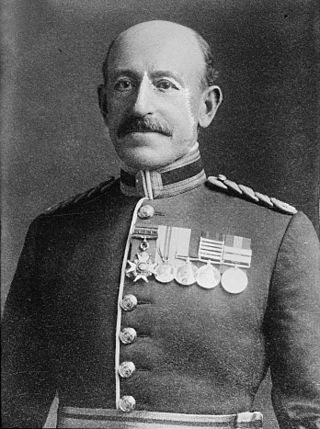
Major-General Herman James Shelley Landon,, , was a British Army officer. During the Boer War he commanded a battalion, and was promoted in the interwar period to take command of a brigade in the British Expeditionary Force. He commanded the brigade during the early fighting on the Western Front in the First World War, and succeeded to the command of 1st Infantry Division when his commanding officer was killed at the First Battle of Ypres; he later commanded four more New Army divisions during the war.

General Sir James Stuart Steele was a senior British Army officer who served as Adjutant-General to the Forces.

Air Vice-Marshal William Charles Coleman Gell, was an officer of the British Army and then of the Royal Air Force. He served as Air Officer Commanding-in-Chief at RAF Balloon Command from 1944 to 1945.

Brigadier Philip Hugh Whitby Hicks, was an officer of the British Army during both the First and Second World Wars.
Brigadier James Noel Tetley was a member of a prominent Yorkshire brewing family and a senior British Army officer who saw active service in the Italian Campaign during the Second World War.
Colonel Charles Fairlie Dobbs CIE CBE DSO was a British Indian Army officer.
Brigadier-General Wilfrith Gerald Key Green was a Welsh officer in the British Army and later a brigadier-general in the British Indian Army. In the First World War he served on the Western Front and in the Sinai and Palestine campaign, where he commanded the 10th Cavalry Brigade. He also commanded the 1st Indian Cavalry Brigade in India after the war.
Major General Sir Guy Archibald Hastings Beatty & Bar was an officer in the British Indian Army.
Robert Sinclair Knox, was an officer in the Royal Inniskilling Fusiliers in the First World War. He was one of seven British officers to be awarded the Distinguished Service Order (DSO) four times during the conflict.

Lieutenant-Colonel Arthur Edward Flynn Fawcus DSO MC TD, was awarded the Military Cross for leading a night attack at Cape Helles in August 1915 at the beginning of the Gallipoli Campaign, awarded the Croix de Chevalier of the Légion d'honneur for his bombing work in the Gallipoli Campaign, awarded the DSO for his Command of a Battalion of the 1/5th North Staffordshire Regiment toward the end of World War I and was afterwards Commander of the 1/5th Sherwood Foresters.
Brigadier-General Herbert Thomas Dobbin CBE DSO (1878-1946) was a British Infantry officer of the Duke of Cornwall's Light Infantry. He commanded a number of Battalions during the First World War and in 1918 was appointed GOC of the 75th Brigade. After the War he became Commandant of the Iraq Levies and Colonel Commandant of the Duke of Cornwall's Light Infantry.
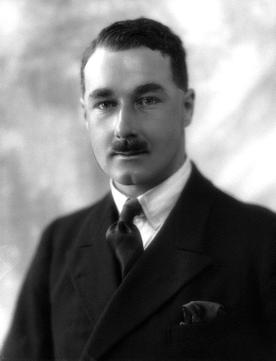
Major General Lechmere Cay Thomas, was a senior British Army officer who fought in both the First and Second World Wars.
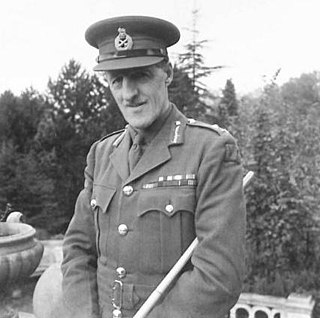
Major-General Robert Knox Ross was a senior British Army officer who, during World War II, commanded the 53rd (Welsh) Infantry Division throughout the campaign in North-West Europe from June 1944 until May 1945.

Lieutenant-Colonel Rowland Edward Power was in Command of the 1st Battalion of the South Nigeria Regiment between 1905 and 1906, the 2nd Battalion of the Buffs during World War I, the 1st Battalion of the Buffs at the end of World War I, and from 1923 until his retirement in 1927, the 1st Battalion of the Buffs in Gibraltar.














